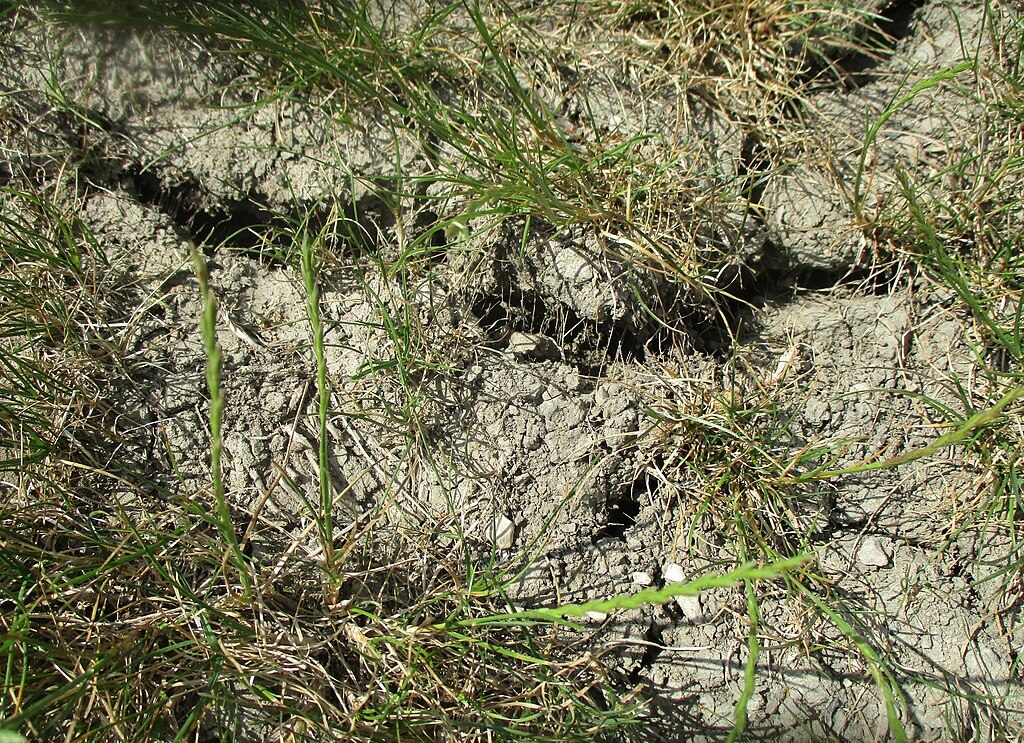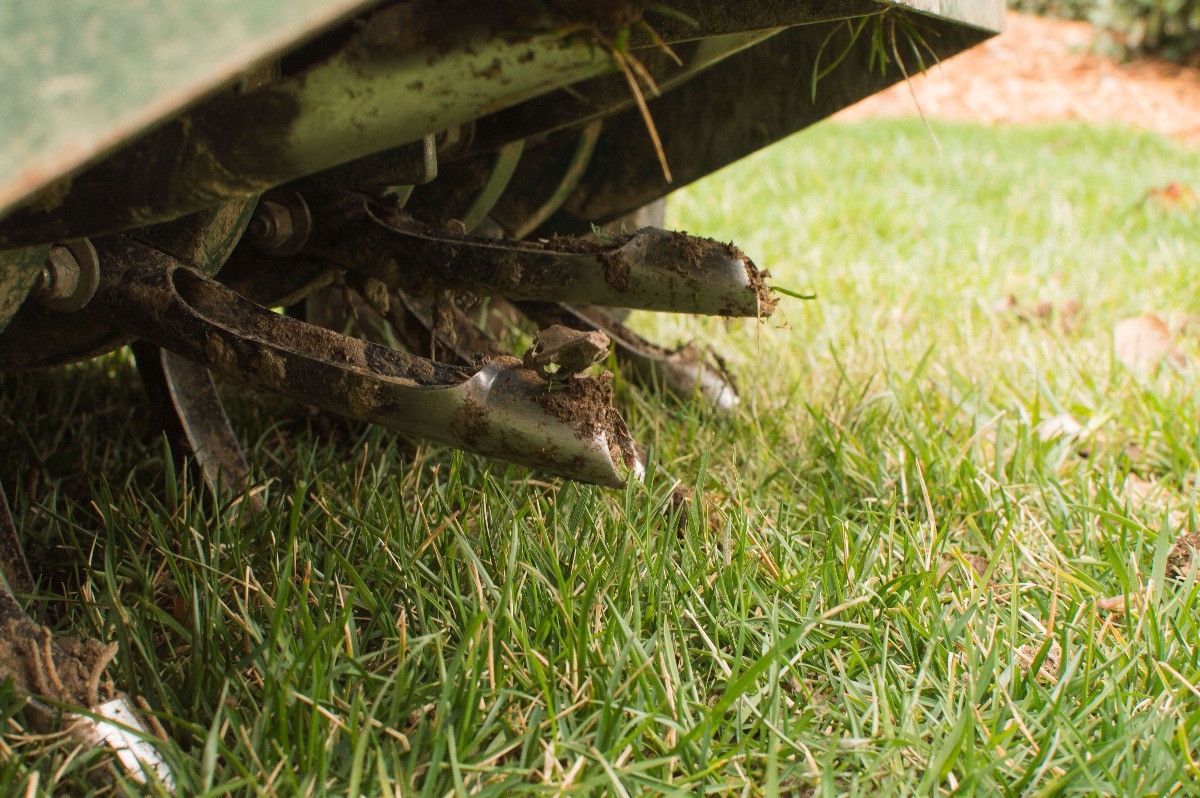
Summer Lawn Stress: How to Spot Heat Damage & Keep Your Grass Green
If you’re like a lot of New England homeowners, you probably take great pride in the condition of your lawn. You love when it’s green and healthy so that you can show it off. While the summer is often prime time to be outside and enjoying the lawn, this is also a season where heat and drought stress can start to take a toll.
In this article, we’ll talk about lawn heat stress (and drought stress) and how you can prevent and address these conditions.
Table of Contents
How to Identify a Drought Stressed Lawn
How to Help a Drought Stressed Lawn
How to Identify a Heat Stressed Lawn
How to Prevent Heat Stress on Lawn
How to Fix Heat Stress in New England
Choosing Lawn Care in Southern NH, Northeastern Massachusetts, and Southern Maine
How to Identify a Drought Stressed Lawn
Heat stress and drought stress usually do go hand-in-hand even though they are separate conditions. Drought stress specifically has to do with the lack of water. But heat stress usually involves lack of moisture PLUS the effects of dealing with intense heat. We’ll talk about that next.
A drought stressed lawn is usually identifiable by a few characteristics.
Dull or Grayish Blue Color
The lawn might change color. This can happen from other problems (like surface-feeding insects or disease, as examples) too. But a clue that it is drought stress is when it’s uniformly discolored across the lawn.
Hardened or Cracking Soil
Without adequate moisture, the soil that your lawn is growing in is likely to become hardened as well. If you try to stick a screwdriver into the ground and that’s hard to do, this could be the sign of a problem. In extreme cases you may even see cracks forming in the soil as it contracts from the heat and lack of moisture.
Footprints Left Behind
When you walk on the lawn, grass blades will bend instead of bouncing up.
In the early stages, a drought stressed lawn can bounce back (and most of the time, will). It is usually when drought stress PLUS heat stress go on for prolonged periods with no intervention that permanent damage occurs.
How to Help a Drought Stressed Lawn
If Mother Nature is not supplying enough rainfall, you’ll want to start watering your lawn. The best method is to use sprinklers which mimic the slow, soaking nature of a light rain. The best time to water is in the early morning, just after the sun rises. At this time of day, it is still cool and the water won’t evaporate too quickly, allowing it to soak deeper into the soil.
Once you’ve identified a drought stressed lawn you will also want to adjust your mowing habits. This can include:
Raising Mower Height
Taller grass helps retain moisture, provide shade, and encourages deeper root growth. Aim to mow with a blade height at 3-4” off the ground.
Keep Blades Sharp
Dull blades cause more damage to your grass - a sharper blade produces a cleaner cut which can accelerate the healing process and reduce unneeded stress.
Consider Pausing Mowing
Mowing drought-stressed grass can cause further stress and damage. If your grass has gone dormant, stopped growing, or is showing any of the signs we mention in this blog, it’s best to suspend your mowing schedule until conditions improve.
How to Identify a Heat Stressed Lawn
Heat stress on a lawn specifically has to do with the high temperatures that might be causing your lawn to struggle. Lawn heat stress, coupled with lack of moisture (drought stress) can lead to the decline of your lawn’s health.
Some signs of heat stressed grass include:
Lawn Discoloration
A lawn that is heat stressed can take on a “scorched” look. The grass can look straw colored or tan from intense sun exposure. The blades might also curl.
Footprints Left Behind
Similar to drought stress, when you walk on the lawn grass blades will bend or snap instead of bouncing up.
Growth Halting
If your lawn has stopped growing (you suddenly don’t need to mow) it could indicate heat stressed grass. Grass can enter a stage of dormancy to attempt to conserve water and energy.
How to Prevent Heat Stress on Lawn
The best approach to maintaining a healthy lawn during the summer months is to practice good lawn care habits year round - setting your grass up in the best possible way to survive through these conditions.
Lawn aeration, for instance, will help prevent your soil from becoming compacted and will help water percolate more easily down to the root zone. Proper fertilization will also play a valuable role in maintaining healthy soil that distributes water well. Good water movement can have an impact on preventing heat stressed grass.
Since a lack of water can lead to drought stress (and ultimately heat stress when also coupled with high temperatures), making sure that you’re keeping up with supplemental watering is also critical during long dry spells.
Established lawns typically require around one to two inches of water per week.
In the springtime when it is rainy, Mother Nature might be supplying that. But during periods of drought in the summer, you may need to step up your watering efforts. You can use a rain gauge to see how much rain is falling and then make sure that you’re making up the difference.
It’s always best to be proactive and attempt to prevent these problems since playing “catch up” can be difficult.
How to Fix Heat Stress in New England
If your grass has experienced heat or drought stress, it may still bounce back. Lawns can often be pretty resilient and may even go into a state of dormancy to protect themselves. But there can be consequences of letting your lawn remain in a period of stress for too long. It might thin out in areas and weeds may creep in. It is also possible for the lawn to die from these conditions.
If your lawn is heat or drought stressed (or both), you need to start watering.
Deep and repeated watering can help restore a heat or drought stressed lawn. But if your lawn was severely damaged by these conditions, you might have to accept that at least some areas of your lawn (particularly any that thinned out and definitely those that have become bare patches) have likely reached a point of no return.
If that’s the case, then you should talk to your lawn care provider about what options you have to fill in those patches. Lawn aeration coupled with overseeding can be highly effective at filling in a lawn with thin or bare areas.
Choosing Lawn Care in the Seacoast Region
At the end of the day, there are many problems that your lawn can face. Heat and drought stress are just two of a multitude of issues that need to be on your radar. But good lawn care habits can help set you up for success. The healthier your lawn is, the more resilient it will be to problems.
That’s why you want to make sure that you’re partnering with a lawn care professional in Southern NH, Northeastern Massachusetts, and Southern Maine who will be performing vital services that promote a healthy lawn.
You also won’t be on your own when it comes to identifying trouble. When a lawn is experiencing heat or drought stress, it’s also more likely to be hit with issues like pests and disease. When that’s the case, it can really help to have a pro on your side.
At Seacoast Turf Care, we’re here to provide you with expert advice and more that will help you grow a healthy lawn. We take great pride in partnering with homeowners and setting them up for lawn care success.
Want to get a beautiful, green lawn? At Seacoast Turf Care, we service NH towns near Stratham, North Hampton, Exeter and many more. Get lawn care pricing for your Southern NH, Southern Maine, or Northeastern Massachusetts property.
Image Sources: dormant grass, rain gauge, heat stressed grass, lawn mower, sprinklers, cracked soil, drought stressed lawn



